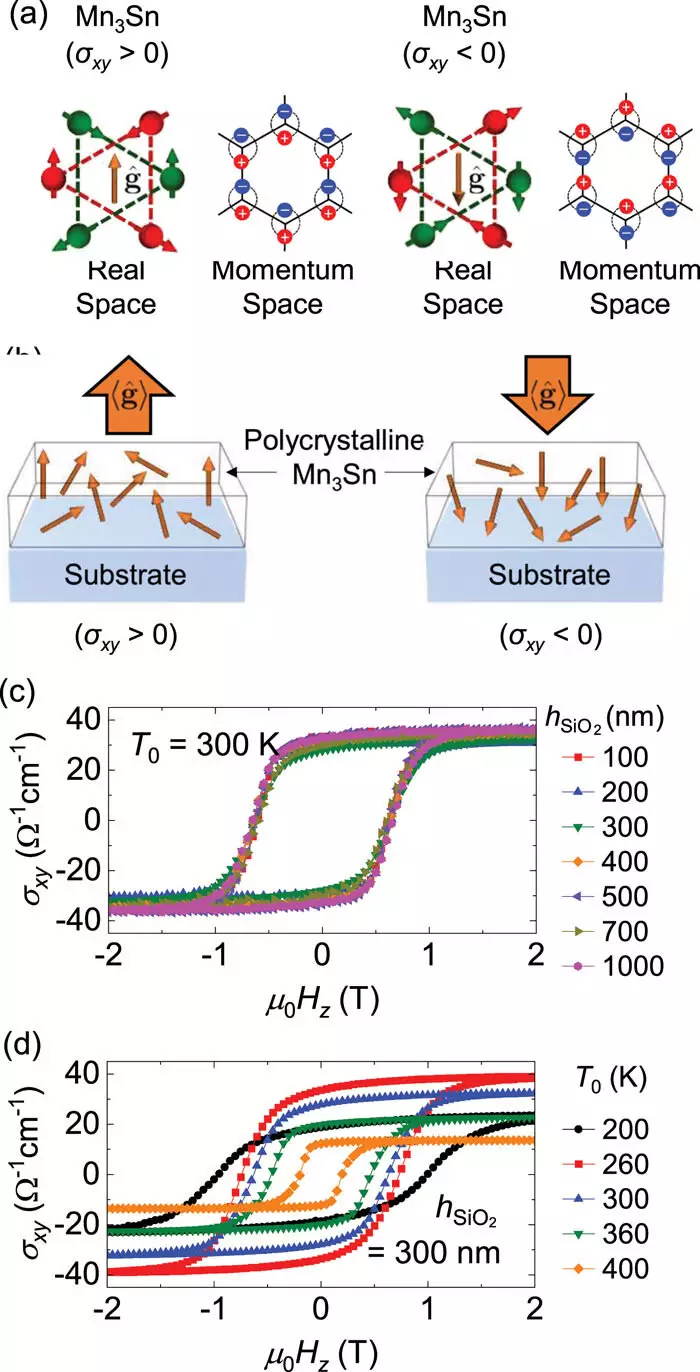Spintronics, or spin transport electronics, stands out as a groundbreaking field in the realm of technology, harnessing the intrinsic angular momentum of electrons—known as spin—to create devices that promise enhanced speed and reduced energy consumption when compared to traditional electronics. While traditional systems rely on electrical charges for data processing and storage, spintronics adds another layer of functionality, utilizing the magnetic properties associated with electron spin. The potential of spintronic devices could usher in a new era of computing that operates efficiently, but significant hurdles, particularly in material selection and temperature management, remain to be surmounted.
As explored by researchers from the University of Illinois Urbana-Champaign, a critical aspect of spintronics lies in understanding how operation under various temperatures influences performance. The breakthrough reported in the journal *APL Materials* presents an innovative experimental technique that allows for the direct measurement of heating effects in spintronic devices. This development paves the way for more effective selection of materials that maintain stable magnetic properties even at elevated temperatures, ultimately leading to devices that deliver enhanced performance.
The operation of spintronic devices hinges on the interaction between electric currents and the magnetic properties of materials, notably antiferromagnets. These materials exhibit unique characteristics due to their array of opposing spins, providing a promising avenue for memory and computational applications. However, the challenge lies in managing the substantial currents necessary to manipulate spin structures, which inadvertently generate heat.
The project lead, Professor Axel Hoffmann, underscores a key issue: the debate surrounding whether alterations in spin configuration are primarily a result of direct electric current interactions or the consequential heating effects. Understanding this dichotomy is essential for optimizing device functionality. If the influence stems from current-driven dynamics, enhancing device speed velocity becomes relatively straightforward. Conversely, if thermal effects dominate, device performance may be hindered by thermal constrictions, complicating efforts to achieve fast operation.
Historically, researchers faced limitations in quantifying heating impacts in micro-scale spintronic devices. However, Myoung-Woo Yoo’s research has introduced a novel methodology capable of deducing thermal effects based on substrate behavior. By fabricating antiferromagnetic samples on silicon dioxide substrates of varying thicknesses, Yoo established a correlation between substrate thermal conductivity and temperature variations within the devices. The findings are pivotal: as substrate thickness increased, so did device temperature, suggesting a tangible impact of heating on spin structure alterations.
The experiment revealed significant heating effects in one specific antiferromagnet studied—Mn3Sn. Importantly, this outcome was not conclusive for all potential candidates in spintronics. The methodology employed creates a framework that can be replicated across various materials, enabling researchers to systematically evaluate the intertwining roles of heating and electric current within multiple antiferromagnets.
The implications of this research extend far beyond a singular finding; they foster a broader strategy for evaluating heating influences in myriad spintronics systems. Yoo states that the new approach is not only straightforward but also widely applicable, making it a versatile tool across diverse electronic platforms, encompassing both spintronics and conventional electronics. This adaptability is crucial for the continued evolution of technology as researchers explore the complexities and intricacies of heat management in advanced materials.
This research marks a pivotal milestone for spintronics, laying the groundwork for future innovations that may enhance device performance while mitigating energy expenditure. The potential to identify materials that resist thermal disruptions will prove critical as the demand for faster, more efficient computing devices intensifies.
As the spintronics field continues to evolve, findings such as these offer invaluable insights into the underlying mechanics governing device functionality. The elevation of temperature’s role in spin-dependent behaviors suggests a pathway toward optimized materials and designs that capitalize on the best aspects of both electronic and spin-based systems. Ultimately, accommodating the challenges posed by thermal influences could lead to a new generation of computing technologies that redefine efficiency and performance, heralding an exciting future for both researchers and industries alike.

